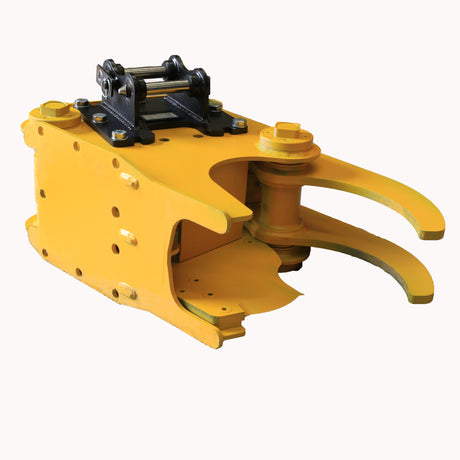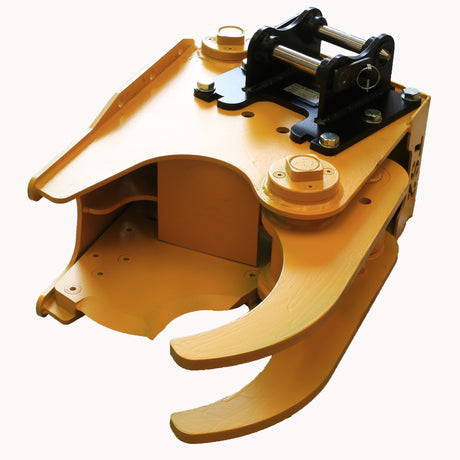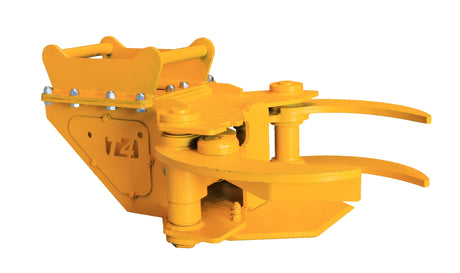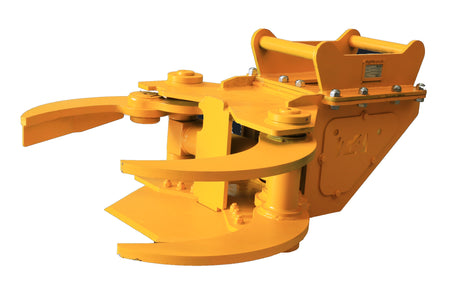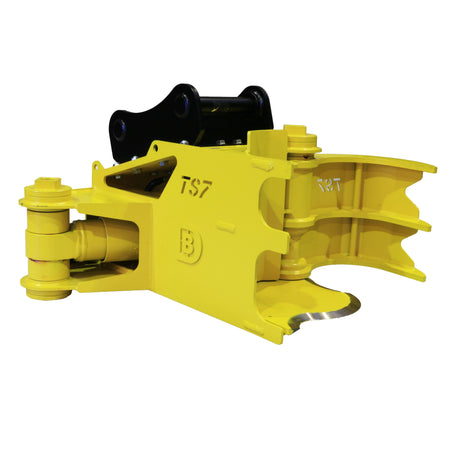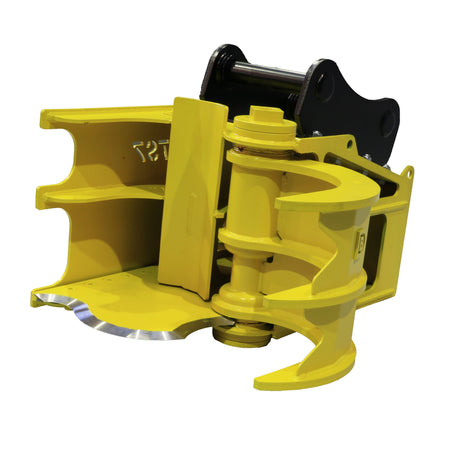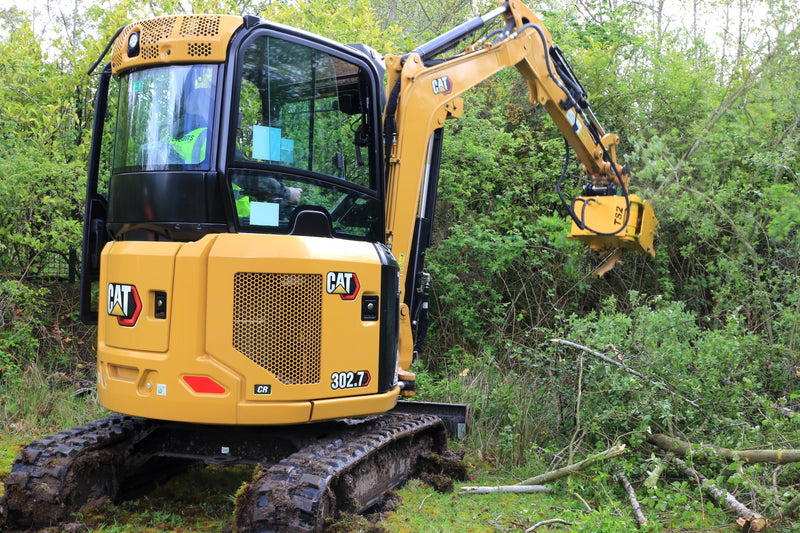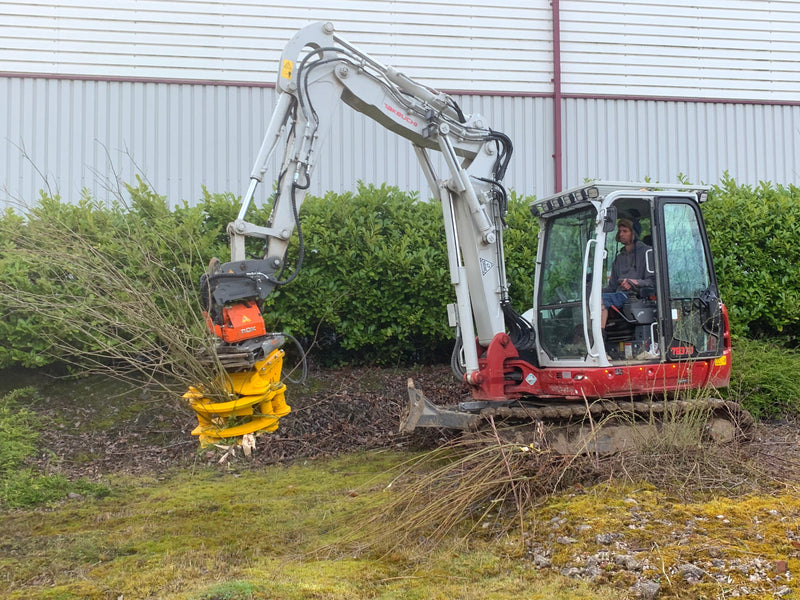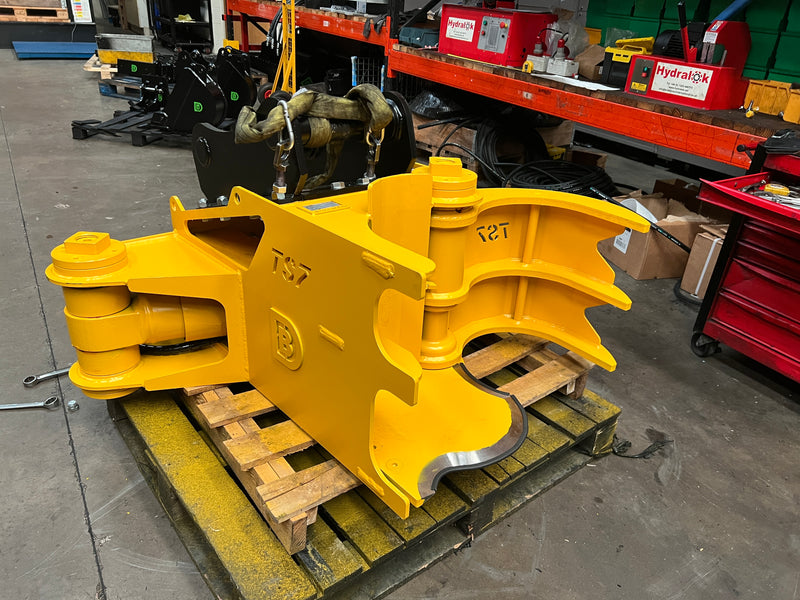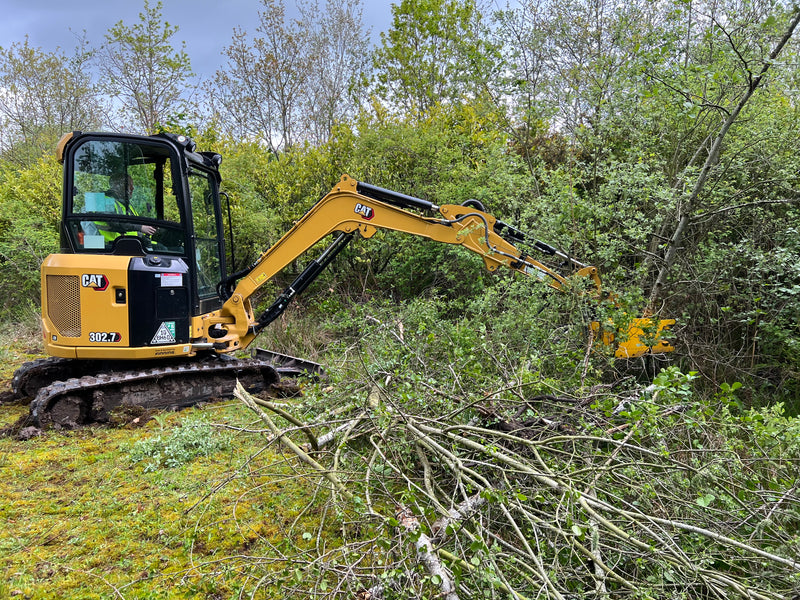Suitable for use in a wide variety of applications:
- agricultural
- forestry
- landscaping
- site clearance
If you're looking to efficiently and effectively clear trees and vegetation, with minimal manual labour, our state-of-the-art tree shears are exactly what you need. The power and efficiency of our tree shears and take your projects to new heights.
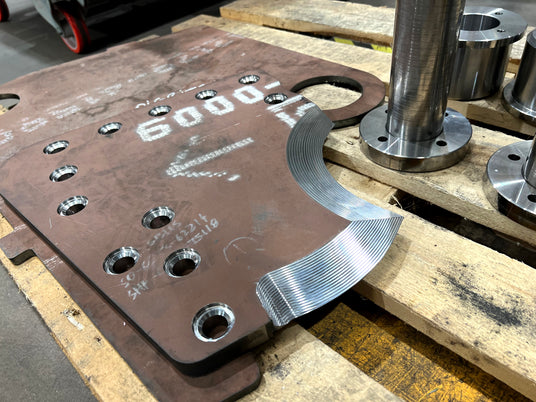
The TS range
Our TS range features and specifications are:
- CNC machined Hardox® 450 blades, for optimal geometry
- Hardox® 450 plate throughout for strength, wear resistance and light weight
- 8-bolt main pivot pin retention on all models for secure, wear free service.
- Carrier Excavator Weights: 2,500 to 14,000 kgs
- Cut diameters: 200, 250 or 300mm
- Expert Support: made by us in UK, means full parts backup from factory.
- Continuous 360 degree rotation - optional extra TS07*
*Machines without dual auxiliary hydraulic circuits will need an additional, optional solenoid valve.
TS02 200mm Tree Shear 2.0-4.9 tonne excavators
£2,974.00Unit price /UnavailableINC. VAT £3,568.80
TS04 250mm Tree Shear 4.0-9.0 tonne excavators
£3,855.00Unit price /UnavailableINC. VAT £4,626.00

All our excavator Tree Shears are manufactured our own works in Staffordshire, UK.
Official member of the Made In Britain directory.
The Tree Shear Range:
Watch our Smallest Tree Shear
The 200mm cut TS02, for 2.0 to 4.9 tonne mini excavators, in action.
Tree Felling
Safety
According to the UK Health & Safety Executive:
"Statistics show that the vast majority of fatal and major injuries in tree work are associated with chainsaw operations, being struck by a tree/tree branch or a fall.
Between 1 April 2000 and 31 March 2013 a total of 60 people have been killed as a result of tree work activities and many more have been injured or have suffered ill health.
More than 4,000 people have had their lives affected by the work that they do and these are the ones that HSE know about. There are many more incidents that are never reported to us as they should be.
To put these figures into a wider context, tree work has a major injury incidence rate higher than that of the construction industry."
Consider:
- Using a tree shear on an excavator totally removes risks associated directly from injury by contact with chainsaws or axes.
- Putting the operator in a cab, at a greater distance from the tree being felled greatly reduces the risks from falling trees.
UK Tree & Hedge Cutting
The Rules In Brief
Whilst some areas of construction and landscaping and domestic gardens are not necessarily tied to these agricultural rules, there are some general guidelines within them that help to minimise the impact on wildlife and habitats.
- March 1st:
Do not cut or trim hedges or trees from this date, but you can carry out
hedge and tree coppicing and hedge laying from 1 March until 30 April. - May 1st:
You must not carry out hedge or tree coppicing or hedge laying from this date. - September 1st:
You can cut or trim hedges and trees from this date.
Exceptions:
These vary between England and Wales and differ again in Scotland, but the key exceptions are:
- the hedge overhangs a highway, road or footpath over which there is a public or private right of way and the overhanging hedge obstructs the passage of, or is a danger to, vehicles, pedestrians or horse riders
- the hedge is dead, diseased, damaged or insecurely rooted and because of its condition, it or part of it, is likely to cause danger by falling on to a highway, road or footpath; or obstructs the view of
drivers or the light from a public lamp

Why? Wildlife.
Principally, rules are set to protect wildlife. The main concern being bird nesting season, but other mammals and amphibians benefit from a break in both hedge and grass cutting.
Increasingly, there is concern over insect populations, especially bees, so allowing flowering hedges and wild grass areas to remain in flower is also better for encouraging a balanced and healthy ecosystem and maintaining biodiversity.
Learn more about UK Tree and Hedge Trimming advice:

